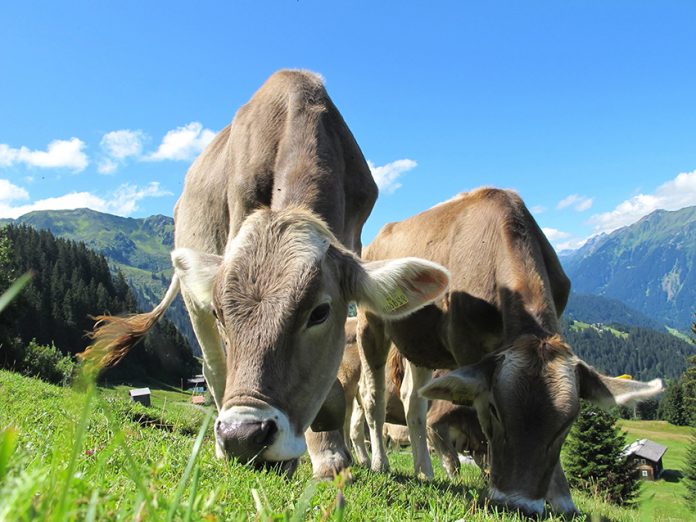MoSAR, INRA’s Research Director, Nicolas Friggens, explores the role of precision phenotyping in agriculture and explains how it is driving animal research
The advent of affordable automated technologies in livestock farming has already had a substantial positive impact on animal, and farmer well-being. However, this is the tip of the iceberg with respect to the potential benefits of these precision livestock technologies. We are on the cusp of a revolution in livestock farming.
In modern animal agriculture, there is an increasing focus on efficiency and resilience. Greater efficiency of food production is needed to feed the planet, and in the context of animal agriculture, this means more efficient conversion of non-available feedstuffs (grass, processing industry by-products, etc.) into human edible proteins. In order to ensure that the resulting efficiency gains are sustainable, strong demands are placed on the resilience of animals because these poorer feedstuffs are of variable quality and frequently associated with variable (grazing) environments. Both resilience and efficiency impact on farm viability, but if one considers the abilities an animal needs to thrive in an alpine grazing system or in an intensive system, it is clear that the relative importance of resilience and efficiency differs depending on the prevailing conditions in the local production environment.
The problem is that resilience and efficiency are difficult to measure in research farms and, at present, well-nigh impossible to measure under commercial conditions. This drastically limits the ability of farmers to manage their livestock for an optimal balance of resilience and efficiency, and for animal breeders to select for resilience and efficiency. However, precision livestock technologies can overcome these constraints, and new projects to capitalise on this potential breakthrough are being initiated.
Precision livestock technologies
Until very recently precision livestock technologies have been directed at monitoring specific events such as the onset of disease or the detection of heat, often using single technologies (e.g. accelerometers). Although this has resulted in very useful on-farm tools it has tended to neglect the potential of these technologies for precision phenotyping, i.e. achieving a radically improved description of the animals’ capabilities, at low cost. Imagine if all the dairy farms that already have accelerometers, and other technologies, for monitoring could also use them to characterise resilience and efficiency. We have already shown that frequent, automated weighing of animals (e.g. when they come to feeders or to be milked) can be used to calculate key components of efficiency such as energy balance1. Accelerometer measures of activity and automated measures of body temperature, both available commercially, provide further components of efficiency. Given this, it seems clear that large-scale phenotyping of animal efficiency is within reach. Similar arguments can be put forward with respect to phenotyping resilience, although in this case, the key feature that needs to be captured is the variability in the time-series of measurements, which reveals the animal’s dynamic pattern of response and recovery when faced with an environmental perturbation2. Again, the use of precision livestock technologies is key because they readily provide the high frequency of measures needed to capture these resilience features.
There are, of course, significant issues that need to be resolved in making the step change from monitoring to phenotyping. Data integration and signal processing from multiple technologies that may be recording with different frequencies and different levels of reliability is statistically challenging even if advances in machine learning and similar methods hold great promise. Then there is the biological interpretation of such measures. Almost all measures that are made on animals reflect different biological processes; an observed dip in growth rate may be due to the animal being ill or it may be due to a change in social behaviour, or a number of other biological causes. This is where the use of multiple technologies measuring different aspects of animal biology is important (if the animal with the dip in growth also has an elevated temperature, or better still an elevated immune indicator, then it is likely a health event). However, this is far less straightforward for complex phenotypes such as resilience and efficiency. A recent EU Horizon 2020 project called GenTORE is tackling the issue of developing large-scale phenotyping of resilience and efficiency in both dairy and beef cattle.
GenTORE3 is also fully engaged in building the tools needed to make the use of precision phenotypes operational in tailored farm management systems, taking advantage of the opportunities provided by genomic selection. Because of its enhanced precision, genomic selection is well-suited to making progress on complex traits such as resilience and efficiency. Accordingly, GenTORE will develop genomic selection for these traits across a broad range of breeds, including cross-breeds. It will provide tools for assessing local production environments, which in combination with the precision livestock approach and genomic selection, will allow farmers to tailor their breeding management4 to achieve an optimal balance between resilience and efficiency. Projects like this one, and others across the range of farm animal species, will make a significant contribution to meeting the needs for sustainable efficiency and enhanced farm resilience in a diversity-rich livestock sector.
References:
1 Thorup VM, Edwards D and Friggens NC 2012. On-farm estimation of energy balance in dairy cows using only frequent body weight measurements and body condition score. Journal of Dairy Science 95, 1784-1793.
2 Codrea MC, Højsgaard S and Friggens NC 2011. Differential smoothing of time-series measurements to identify disturbances in performance and quantify animal response characteristics: an example using milk yield profiles in dairy cows. Journal of Animal Science 89, 3089-3098.
3 GenTORE stands for: Genomic management Tools to Optimize Resilience and Efficiency. This project has received funding from the European Union’s Horizon 2020 research and innovation programme under grant agreement No 727213
4 Kelleher MM, Amer PR, Shalloo L, Evans RD, Byrne TJ, Buckley F and Berry DP 2015. Development of an index to rank dairy females on expected lifetime profit. Journal of Dairy Science 98, 4225-4239.
Nicolas Friggens
Research Director
MoSAR, INRA.
Tel: +33 (0)1 4408 1767
nicolas.friggens@agroparistech.fr
Please note: this is a commercial profile











